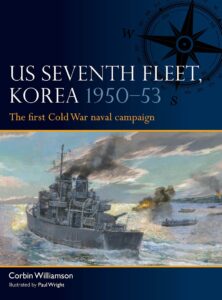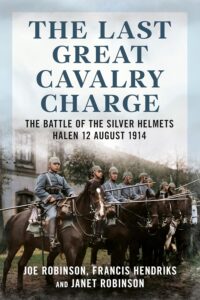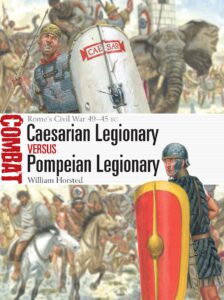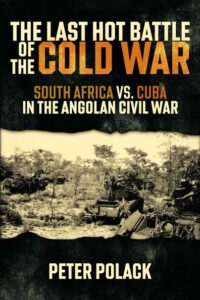
by RNS | Sep 12, 2025 | Beating Tsundoku
Stuart Hadaway, Sinai 1916-17 (Osprey, 2025)
The most popular description of World War I reflects the European Western Front of ‘mud and blood’ in the trenches. But that is far from the whole story, as Stuart Hadaway narrates in this illuminating Campaign series book from Osprey. The theatre Hadaway is interested in is the desert campaign fought between the Commonwealth forces and the Ottomans for control of the Suez Canal, the ‘jugular vein of the British Empire’.
After retelling the background story of the Ottoman attack on the Suez Canal in January 1915, which was repulsed by the Indian garrison, Hadaway introduces the Egyptian Expeditionary Force, made up of British and Commonwealth troops, tasked with developing a buffer zone in the Sinai for the Canal. Hadaway considers the opposing commanders: the Ottoman Ahmed Djemal Pasha and General von Kressenstein, his German staff officer, and for the Commonwealth forces, Sir Archibald Murray, Sir Herbert Lawrence, and Sir Harry Chauvel. Assessing the forces follows. The Ottoman organisation changed under the exigencies of war, and the mostly peasant army faced manpower and logistical problems. They were assisted by specialised troops from their European allies. Hadaway notes the esprit-de-corps of the British and Commonwealth forces, the usefulness of their cavalry across great distances, and the lack of potency in the air, and he makes a special mention of the Egyptian Labour Corps without whom the army would have difficulty advancing or supplying itself. As for strategies, ultimately the Ottomans wanted to liberate Egypt, but they needed to control the Sinai. They ended up doing neither. The British needed to defend the Suez Canal, but initial victories led them to underestimate the Ottomans; a story that Hadaway goes on to narrate.
You cannot fight effectively in the desert without proper logistical support, and that is where Hadaway begins his narrative. He compares the British and Ottoman supply difficulties, the focus of which would be the Suez Canal. The Ottomans struck first, at Qatia, on 23 April 1916, leading to the Commonwealth forces digging in at Romani. The Ottomans attacked again in early August. After hard and often confusing fighting, the Ottomans retreated with the Commonwealth forces in pursuit. They in turn would find themselves blocked at Bir El Mazar in mid-September. Nevertheless, the advance continued. Haddaway follows the action to El Arish and Magdhaba, which fell in December 1916. By early 1917, the Commonwealth forces had achieved their strategic goal of securing the Suez Canal. Although severe setbacks awaited, Hadaway concludes here; the Sinai campaign was over.
The Sinai campaign of 1916 and 1917 may be less well known among casual readers of World War I, but Hadaway’s book should bring it to a wider audience. It is not easy to clearly narrate military campaigns fought in a desert, but Haddaway manages it very well by blending operational information with the human factor. He also weights his narrative effectively, giving due credit to the considerable work ‘behind the scenes’ in addition to the front-line fighting. With the assistance of Osprey’s customary excellent maps and illustrations, Hadaway’s book should turn more attention to this oft ignored World War I theatre.

by RNS | Sep 2, 2025 | Beating Tsundoku
Corbin Williamson, US Seventh Fleet Korea 1950-53 (Osprey, 2025)
Some still refer to the Korean War as the Forgotten War. If it is remembered, it is the ground war that garners most interest followed by the air war in the new jet age. What is too often overlooked is the role of the various navies that made up the UN force at sea. In this book, Corbin Williamson addresses that omission with a particular focus on the most powerful fleet in the world at the time, the US 7th Fleet.
Williamson begins with an overview of the 7th Fleet after World War II. He notes that the fleet remained busy even while US defence cuts took hold and foreign policy focus shifted from the Pacific to Europe. There was also internal dissension between the Air Force and the Navy over how US airpower would function. In the meantime, tensions arose on the Korean peninsula with the threat of a communist takeover. The 7th Fleet held exercises with the Royal Navy in March 1950, but the real action was just around the corner with the communist assault on the Republic of Korea.
An analysis of the 7th Fleet follows the narrative preamble. Williamson surveys the ships, including the carriers, battleships, cruisers, and destroyers, before moving onto the naval warplanes and helicopters. Williamson examines how the fleet operated, focusing on command, control, and communications. Here we find that the Navy was split into two commands in the Pacific then into three groups as the demands became clearer – Williamson helpfully includes an organisational chart to show the various changes. Williamson next describes the problems in communications caused by the increase in wartime radio traffic. The Korean War required a change in US naval doctrine and an increased need for manpower. Williamson also covers naval intelligence and logistics.
Knowing how the navy operated helps us understand what they did in combat. Williamson narrates the defence of the Pusan Perimeter in 1950. Overall naval supremacy was established quickly in the Korean War, but the main naval activity was providing air support for ground troops. Perhaps the most famous incident in the war was the landings at Inchon, facilitated by the Navy and let us not forget the pivotal role of the US Marines. Williamson adds the daring bombardment of Chinnampo to his narrative along with other evacuations of troops when the Chinese flooded over the Yalu River. In 1951 and 1952, the Navy helped interdict Chinese communications with varying degrees of success. Later, to provide an edge in peace negotiations, the Navy increased its attacks on infrastructure.
This is an informative book that adequately supports Williamson’s conclusion that the actions of the 7th Fleet demonstrated the continuing utility of the navy in a time of jets and missiles. Williamson does a good job of explaining how the fleet operated, and he takes care to include the valuable support of other national fleets in this United Nations operation. There is not much in the way of significant events to cover in this war, but Williamson brings out those that were important while describing the fleet’s almost continuous role in supporting the action on the ground. Osprey adds its usual flavourful artwork and graphics to produce a useful survey of this often overlooked aspect of an often overlooked war.

by RNS | Aug 25, 2025 | Beating Tsundoku
Joe Robinson, Francis Hendriks, Janet Robinson, The Last Great Cavalry Charge (Fonthill, 2025)
It is a truism that the age of cavalry dominance ended in World War I. Those who clung onto the traditions of massed cavalry charges overwhelming helpless defenders were in for a rude awakening when they discovered that horses and industrial warfare do not mix. We can determine the exact day that the Germans found this out thanks to a well-researched and informative book first published in 2015 and now republished by Fonthill books: The Last Great Cavalry Charge. That day was 12 August 1914 at the Battle of Halen.
It seems that the cavalry disaster at Halen was an accident waiting to happen. The authors trace doctrinal problems back to the war against France in 1870 when rifled infantry weapons took their toll on cavalrymen. But the Germans did not learn and reiterated the primacy of the cavalry charge in their 1909 doctrinal manual. This was despite structural, training, communications, and planning problems, all of which would play a part at Halen. The Germans erred at the strategic level too. Their wide swinging wheel on the right-flank of the Schlieffen Plan did not have enough cavalry, and the Belgians delayed their progress, with fatal consequences.
That brings our authors to Halen and its environs, which they describe in detail. They move on to the orders of battle and a description of the competing forces, including the unique Belgian cycling battalion. After some minor skirmishes between German and Belgian cavalry, the Belgians decided to dig-in and create a formidable defensive barrier. But miscommunication left gaps for the Germans to exploit; that and the weight of numbers soon began to tell on the backpedalling Belgians. The Germans took Halen then over-reached, launching eight cavalry charges against the Belgians, who were far from defeated. The authors describe this in gruesome detail with the aid of multiple first-hand accounts. They are as incredulous as the Belgians must have been at cavalry charges launched with ‘pride and tradition’ but no common sense. Confused fighting ensued until the Germans withdrew as darkness fell, having repulsed Belgian counter-attacks. The authors found that the number of human casualties was smaller than suggested at the time, but the great loss in horses badly affected the German cavalry. In their conclusion, the authors argue that this was the last great cavalry charge, noting the superiority of automatic weapons against horses and that the Germans never tried a mounted charge on this scale again.
This book is an informative account of a battle that should probably never have been fought. The authors lay bare the problems, most of them self-inflicted, that awaited the German cavalry in August 1914. Their depiction of the battle is well-researched, and the text is well-supported by first-hand accounts, particularly on the German side. The book reads like a report in places, but the combat sections are well told, as is the authors’ analysis of events. If you are one of those that hold to the myth of Teutonic efficiency, you will be in for a shock when reading this account. In many ways, the Battle of Halen typifies the culture of war shock that rapidly enveloped the armies on all sides when an outmoded form of warfare collided with the reality of the industrial age. Thus, The Last Great Cavalry Charge is well worth reading for military history students and those with an interest in World War I.

by RNS | Aug 4, 2025 | Beating Tsundoku
William Horsted, Caesarian Legionary versus Pompeian Legionary (Osprey, 2025)
On a cold January day in 49 BCE, Julius Caesar ‘rolled the dice’ and crossed the Rubicon river into Italy. The result of that shocking decision was a Roman civil war and a clash of two of Rome’s finest generals, the up and coming Caesar and the old warhorse Gnaeus Pompeius Magnus. As is the case for most civil wars, the combatants were very similar in arms and equipment, organisation, and tactics. In this latest book in Osprey’s Combat series, William Horsted surveys the forces on both sides and highlights the factors that led to victory for one side and disastrous defeat for the other.
Horsted weaves much of his descriptive insights into a narrative of events that begin with Caesar crossing the Rubicon, leading an army more loyal to him than Rome. That put the powers in Rome in something of a quandary, and they turned to the great general Pompey to bail them out. Horsted diverts to ask how their armies were recruited and motivated – unsurprisingly, promises of money and land helped with both. Horsted examines how these soldiers were led, how they were organised, and their weapons and equipment. Horsted now comes to his three battles. They do not include Pharsalus, which, perhaps, is surprising. First up is Dyrrachium, one of the opening engagements of the civil war in which Pompey broke Caesar’s siege lines on the Greek mainland. Then we move to another siege, this time in North Africa at Thapsus in 46 BCE. By then, Pompey was dead on a beach in Egypt and Caesar faced Scipio and his ill-behaved elephants. Caesar won that battle, but there was still work to do. The following year, Caesar wrapped things up at Munda in Spain against Pompey’s son Gnaeus. Horsted analyses those three battles, highlighting the often small differences that led to victory and defeat. He closes with a brief reminder of Caesar’s fate and the consequences of that for the doomed Roman Republic. Novices to the period will appreciate Horsted’s annotated bibliography for the ancient sources.
Caesarian Legionary versus Pompeian Legionary is a solid introductory survey of this clash of titans. Horsted comfortably navigates the often complex sequence of events, and he is aided in that by Osprey’s usual quality maps and illustrations. Horsted’s selection of three battles captures the diversity of this civil war, which was empire wide, and the forces involved. It is perhaps ironic that the battles hinged to a great extent on the performances of auxiliaries in a book on the legionaries, but that only highlights the similarities of the principal Roman forces. I also felt that Caesar’s military genius deserved more recognition. Nevertheless, this is an informative survey that will appeal mostly to readers unfamiliar with this Roman Civil War, though more experienced campaigners will still find much to enjoy and muse over.

by RNS | Jul 29, 2025 | Beating Tsundoku
Peter Polack, The Last Hot Battle of the Cold War (Casemate, 2025)
The Battle of Cuito Cuanavale was fought between South African/UNITA and Cuban/FAPLA troops in Angola over a seven month period from August 1987 to March 1988. This was a wide-ranging battle fought over nine-thousand square miles of southern Angola, making it the second largest battle on the African continent after El Alamein. First published in 2013 and now reproduced as a paperback by Casemate, Peter Polack’s The Last Hot Battle of the Cold War tells the gripping story of an intense battle in a crucial phase of the Angolan Civil War.
BUY NOW
Polack outlines the background of the conflict, which erupted from Angola’s independence from Portugal in 1975. The main parties that fought for control were the communist backed MPLA, the US backed UNITA, Cuba, and South Africa. The civil war culminated in the two-part Battle of Cuito Cuanavale. The MPLA’s armed wing was FAPLA, originally led by Soviet advisors who planned the ill-fated attack across the Lomba river. That led to a disastrous retreat followed by a stout defence of Cuito Cuanavale, aided by Cuban forces, against a South African advance. Polack considers the Cuban and South African forces that fought in Angola, including Cuba’s dominance in air power and South African improvisation and innovation. After a brief summary of the Soviet advisors in Angola, Pollack turns to the Angolan FAPLA and UNITA forces and their development. A longer aside follows on the career of General Ben Ben of UNITA before Polack enters the narrative.
In Spring 1987, FAPLA initiated a build-up of forces around Cuito Cuanavale. That is where Polack begins his story. An initial advance of FAPLA, dogged by problems but partially successful, crossed the Lomba river then ran into a South African and UNITA buzzsaw of infantry and artillery fire. In the intense fighting that followed hundreds of FAPLA were killed and wounded. Polack interrupts his narrative with a brief biography of South African Commandant Robbie Hartslief, but he is soon back into the action with the retreating FAPLA pursued by the South Africans. Both sides then settled in for the siege of the town of Cuito Cuanavale. Polack makes it clear that the Soviet advisors to FAPLA had proved disappointing. It would be left to the Cubans to bail them out, which they did through advice, training, effective command, and forces on the ground. Polack provides a blow by blow account of the siege, including chapters on the air war, casualties, and prisoners of war. In December 1988, a ceasefire was signed, which brought about the withdrawal of Cuban and South African forces. But the repercussions continue with Polack highlighting the ongoing process of clearing landmines. Various lists of officers and men involved in the fighting closes out Polack’s book.
Polack has written a book packed with information about a conflict still too few know about. He also captures the spectrum of experience from the top commanders to the soldiers in the field, some of whom paid too high a price for poor decision making by those commanders. There are places where Polack disrupts the flow with digressions that could have been footnoted, and the ratio of narrative to information could have been better weighted, but once Polack gets into the narrative, his descriptions of ground combat are often harrowing, and he provides the reader with a sense of being there; for example, trapped in a South African armoured vehicle with a T-55’s turret slowly turning, or in an FAPLA trench as the artillery rained down, or just being in the sensory-depriving heat of Angola with potential death all around. Some of his selected quotes from the combatants are as authentic as any you will read in military history. Despite the asides and diversions, this book was well worth Casemate’s effort in bringing Angola to a wider readership.






